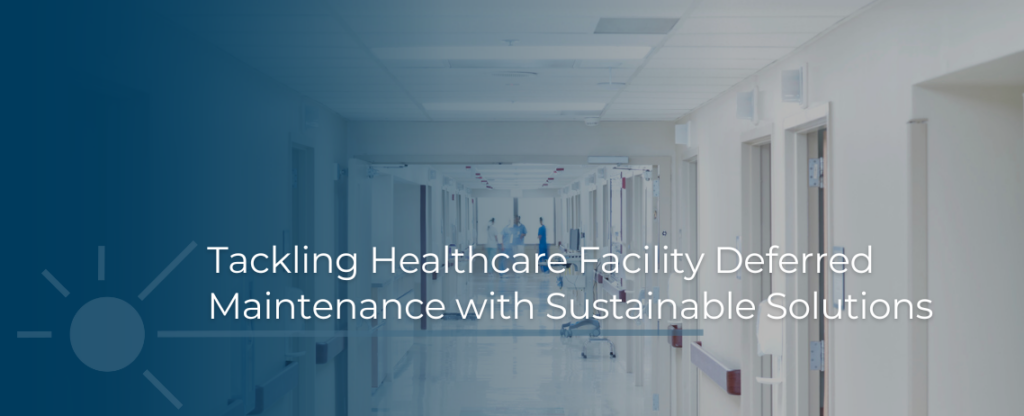
Deferred maintenance refers to the postponement of necessary repairs, updates, and general upkeep of a facility, typically due to budget constraints or other organizational challenges. For healthcare systems, deferred maintenance can cause disruptions to hospital operations, negatively impacting patient safety and their ability to deliver care.
A survey conducted by Healthcare Facilities Management found that 38% of hospital respondents experienced disruptions to patient care due to deferred maintenance issues. And just last year, a western state hospital made headlines when a single boiler was overloaded in a cold snap and failed. Their heat and hot water supply was halted, all hospital services were suspended, surgeries and procedures were rescheduled, and patients were moved to nearby facilities for care. It took days to get back up and running.
Deferred maintenance not only impacts a hospital’s daily operations and quality of patient care but often requires costly repairs when systems fail. The American Society for Healthcare Engineering (ASHE) has reported that deferred maintenance costs for U.S. hospitals can range into the billions of dollars.
Deferred maintenance costs for U.S. hospitals can range into the billions of dollars.
American Society for Healthcare Engineering
This issue is continuing to rise amongst healthcare systems as it also impacts reputation, staff morale, and compliance standings. Instead, implementing sustainable facility solutions can help tackle deferred maintenance while also staying ahead of industry regulations, allowing you to move from reactive to proactive facility planning. Planned replacements can include broader systemic improvements instead of an emergency replacement, which can cost dramatically more.
3 Sustainable Solutions for Healthcare Systems

LED Lighting
Retrofitting a building with LEDs is one of the best investments in energy efficiency a hospital can make. LEDs require up to 80% less energy than traditional incandescent bulbs and 20-30% less than fluorescent lights. By consuming less energy, LEDs also contribute to a reduction in carbon emissions and help lower energy costs up to 80%.In addition, LEDS are more durable and have longer lifespans, lasting anywhere between 15,000 to 50,000 hours, depending on their quality and usage, while fluorescent lights typically last around 8,000 hours.
LED lighting will save a hospital thousands each year in energy costs, and will cost even less to replace. LEDs also provide an exceptionally bright light, which helps to illuminate entrances and exits, parking lots, and garages, enhancing staff and patient safety.
Solar Energy
Installing solar panels through a centralized approach is one of the best renewable energy sources – and it’s an emissions-free solution. Generating solar power on-site reduces the amount of electricity used from the grid and helps lower operational costs while also allowing healthcare systems to be energy independent and more reliable. In addition, solar panels typically require minimal maintenance which can help reduce ongoing operational costs and the need for frequent repairs or replacements.
High-Efficiency HVAC Systems
Heating, ventilation, and air conditioning require substantial energy usage. They are some of the biggest costs associated with commercial energy use, and the healthcare sector is no exception. In such a sensitive environment, it may not always be possible to turn the heat or the AC down to save on costs. Instead, hospitals should consider investing in energy-efficient systems. ENERGY STAR-rated heating and cooling units will run more efficiently, saving money in the long-run.
An Industry Move Towards Sustainability
Providing stellar patient care and a comfortable treatment experience requires a significant amount of energy. Hospitals spend thousands of dollars per bed in electricity each year and the healthcare industry accounts for 9.8 percent of U.S. greenhouse gas generation. Because of this, we’re seeing more and more healthcare professionals looking to reduce their impact on the environment and lower their operational costs to meet sustainability goals.
The healthcare industry accounts for 9.8% of U.S. greenhouse gas generation.
Journal of Hospital Medicine
In addition, The Joint Commission announced that effective January 1, 2024, healthcare organizations can voluntarily choose to join the Sustainable Healthcare Certification Program. This program helps accelerate sustainability practices and reduce greenhouse gas emissions and grants public recognition for these efforts. It will also help the industry in creating baselines to measure three sources of GHG emissions and developing an action plan to reduce them.
As the industry moves towards implementing more sustainable practices throughout your facility portfolio, healthcare systems can tackle their deferred maintenance issues by updating their system with sustainable ones, moving away from a break-and-fix mentality and adopting a proactive approach to creating a resilient space for their patients and staff.
SitelogIQ’s Process for Tackling Deferred Maintenance with Sustainability
Failing to address deferred maintenance at healthcare facilities puts them at risk of experiencing disruptions to critical patient care and costly repairs. At SitelogIQ, we partner with hospitals and healthcare systems to develop capital plans that allow them to identify and prioritize facility improvements, develop financial strategies for upgrades, execute projects, and continue to build their plan to have sustainable reliability.

In addition, our technology platform, mySiteIQ, gives valuable visibility into building assets, access to schedules and budget scenarios, and key performance metrics to keep team’s informed and help them meet short- and long-term facility and sustainability goals.
Contact us today to get started.






